TOP 9 THINGS TO DO IN NAMIBIA
- Rob Krahen

- Jan 16, 2022
- 10 min read
Updated: Jan 26, 2025
A few years back, inspired by some dreamy photos I saw online, I made an “accidental” trip to Namibia. Wow! I ended up stumbling onto one of the most amazing and memorable journeys I have ever taken. Namibia is an incredible country with so much to offer. You’ll have plenty of great options to choose from when you are planning your itinerary. The following are the most recommended experiences that I had when I went to Namibia. I say these should also be at the top of your “To Do” list when you have made the decision to visit.

1. The Namib Desert (Namib-Naukluft National Park)
The Namib Desert is a place made for superlatives. It’s the oldest desert in the world. It has the driest climate on earth. It is home to the tallest dunes on the planet (and they’re red!). It is an otherworldly place that offers something to every kind of traveler. If you love nature and wildlife, you’re covered. If you enjoy extreme sports, check. Is photography your thing? You have no idea. Do you travel to see amazing things? Prepare to have your mind blown! There are not enough words to describe the astounding Namib Desert with any justice, so I’ll just use one - Go!
2. Sossusvlei
Immerse yourself in the otherworldly landscape of Sossusvlei. Namib-Naukluft National Park is HUGE (I heard it was the same size as Switzerland)! So if time is limited, make sure Sossusvlei is the part of the park that you don’t miss. This area of the Namib Desert is the most recognizable to people even if they’ve never heard the name Sossusvlei before. Movies like “Mad Max: Fury Road” and “The Cell” were filmed here. It’s featured in the “Planet Earth” documentaries and on calendars and screen savers the world over. The landscapes here are iconic, although nothing will prepare you for seeing them with your own eyes. Sossusvlei is a sea of red sand, containing some of the tallest dunes in the world. These gorgeous red dunes tower over white clay pans. The most famous of these clay pans is the one called Deadvlei.
Deadvlei is a supremely surreal place. It features the blackened skeletons of long dead trees rising from the white clay. These trees have been standing here for over a thousand years (500 years before Columbus “discovered” America)! This place is a must. It will be the highlight of your entire trip.
3. Etosha National Park
See all the animals in Etosha National Park: There are a LOT of options for wildlife viewing in Africa. I imagine visiting a National Park or private game reserve is probably at the top of everyone’s Africa bucket list. Who doesn’t want to see these amazing creatures in their natural habitat? Namibia, offers you one of the best animal viewing opportunities on the continent with Etosha National Park. Etosha has a unique landscape that sets it apart from other popular parks. Located in northern Namibia, much of the park terrain seems pretty barren (in fact, a lot of it is covered by a seemingly endless salt pan - which is a sight worth seeing in its own right). The animals are able to survive because there are naturally occuring watering holes throughout Etosha that provide life sustaining water. These are the two factors make this park an incredible place to view animals;
A.) Etosha’s landscape is stark and barren, so there’s not many places for the animals
To hide.
B.) The animals must visit the watering holes in order to survive.
I guarantee if you go to Etosha - you will see animals! I also recommend spending at least one night at a campsite inside the park (I stayed at the Halali Rest Camp and loved it). The camps are all built near watering holes, so you have the opportunity to sit in a blind and drink a glass of wine and wait for the animals to come to you. It is a magical experience you won’t ever forget.
4. African Safari
Join a safari or guided tour. I have read that Namibia is one of the best African countries to self-drive. The roads are good, the tourist infrastructure is solid and its most amazing parks (including the ones listed above) are easily visited by car. If you are a person that thrives on doing it yourself and needs the freedom of having your own vehicle, I’m confident that you’ll have a blast motoring around Namibia.
That being said, I think one of the best decisions I made was joining a small group safari. I always imagined that I would never be able to afford a guided trip like that. Luckily, Namibia offers these safaris at all different price ranges. You do not need to spend a lot of money to have an incredible experience.
Once upon a time, safaris were all about hunting game. The modern safari has become a form of tourism that can actually benefit the wildlife. Safaris today include not only viewing animals, but also experiencing local cultures and seeing natural wonders. In addition to having guides that know the area and can provide you with great information and insight throughout the trip, you’ll get to meet and travel with a group of like-minded people from all over the world. I’m still friends with the people I met on that trip (Shout out to my Namibia peeps!)
In Namibia, it takes a lot of driving to get from place to place. You have to cover vast distances on long stretches of road with no services or places to stop. I loved having someone (who knew where they were going) to do all of that driving. I was able to sit back and have a beer and get to know my fellow travelers, take a nap or quietly stare at the landscape out the window - stress free.
I should add that our amazing guides also prepared the meals - and the food was super good, often traditional Namibian dishes. The camps we stayed in were uniformly excellent, some of my favorite lodgings ever. Even when things didn’t go according to plan on that trip, it was comforting to know that someone was there looking out for me. I can’t recommend going on an organized safari enough, it will enrich your Namibia experience immensely.
5. The Skeleton Coast
Get spooked by the Skeleton Coast. The coast of Namibia where the stark desert meets the wild and treacherous Atlantic Ocean is one of the eeriest places you’ll ever see. It is undeveloped and untamed, littered with shipwrecks and whale bones. Seeing photos of the Skeleton Coast and Sossusvlei are what inspired me to visit Namibia in the first place. We drove for hours along this desolate coast, stopping to see some of the shipwrecks. This area also features some incredible lichen fields and an insane seal colony (200,000+). It is another part of Namibia that you can truly call surreal. When I return to Namibia someday, I’ll definitely try to see more of this haunted place. I’d like to see it from the air next time. I believe they have some remote camps you can fly into. Do yourself a favor and Google aerial pictures or videos of the Skeleton Coast. You’ll be booking a ticket in no time.
6. The Sand Dunes
Dune it! Namibia is home to one of the world’s most magnificent deserts, so you really should get out and play on those dunes. Climbing a dune is one of the quintessential Namibia experiences. Some of the dunes in the Namib Desert are 1,000 feet high! A lot of people climb Big Daddy, which is the tallest dune in Sossusvlei. That takes a chunk of the day to accomplish. My group climbed the nearby, not quite as tall, Big Mamma. Climbing dunes is hard work but the view from the top of the dunes is incredible. You’ll be surrounded on all sides by endless stretches of red sand dunes. Later, I climbed Dune 45, which is a popular star dune on the road to Sossusvlei.
I also visited some golden dunes, including Dune 7 near Walvis Bay. At that dune, I sat at the bottom and enjoyed a beer while my friends scrambled up to the top (priorities).
There are many extreme sports and adventure companies in Namibia. There were people from my group who did a 4X4 trip over the dunes, some others did sandboarding and sledding. One of the girls even did a skydive over the desert. I can’t recommend any of these activities from personal experience, because I like being alive. However, I can say that all of the people who participated in these activities did indeed live - so, it’s up to you.
The last bit of dune advice I have is this; on the way up, make sure you walk up the dune on the ridge, it’s the least strenuous way to ascend. When you come down, run straight down the side of the dune. Your shoes and pants will fill with sand, but it is the most exhilarating experience!
7. Visit with Herero and Himba Tribes
Namibia is a sparsely populated country made up of several different ethnic groups. During your visit, you’ll have the opportunity to meet people from some of the tribes still scratching out a living and carrying on their traditions in the difficult Namibian countryside. I recommend stopping at one of their roadside stands to talk with them and buy some handmade crafts. If you buy a little something, they are very nice about getting their photograph taken. Getting some photos was important to me, because I never wanted to forget how striking these people were in their traditional dress.
The women of the Herero tribe wear long colorful dresses and wide brimmed hats in the same style as the German missionaries who came to Namibia in the 1800s. They looked stunning in their finery set against the backdrop of the Namibian desert.
The Himba people wear almost no clothing and instead cover their hair and skin in a sort of paste that protects them from Namibia’s harsh climate. This mixture has the effect of turning the Himba a rust color. I thought they looked magical. They are definitely pushy salespeople (I left with a lot of red fingerprints on my arm - haha), but why wouldn’t you want to buy your authentic Namibian souvenirs from these amazing folks and do a small part to help them survive?
8. Swakopmund and Walvis Bay
Spend some time in civilization. There are a couple of interesting resort towns on the coast of Namibia that I would recommend for a short visit. After spending so much time in the wilderness, I found it refreshing to eat in an actual restaurant, connect to wi-fi and see some different people for a day or two.
Swakopmund is the most popular seaside town in Namibia. It has all of the facilities you might be looking for. What makes it really unique though has less to do with Namibia than the people who colonized it (the Germans). Swakopmund is disorienting because it feels like you’re walking around a Bavarian village plopped down on the shores of Africa. It’s as strange as it sounds, but I enjoyed eating brats and kraut and finishing off the meal with a real German lager. Prost!
South of Swakopmund is Walvis Bay, a less atmospheric town than Swakopmund but notable for the huge population of flamingos that live in its lagoon. I believe Walvis Bay has the largest flamingo colony in Southern Africa. It was mesmerizing to stand at the edge of the water and watch them. The big golden sand dunes I mentioned earlier are also located near here. So, if you are wanting to do any sort of adventure or extreme sport, either Swakopmund or Walvis Bay would be a good place to arrange those activities (plus you’ll be close to some hospitals!)
9. Sesriem Canyon & Solitaire
Make a quick visit to Sesriem Canyon & Solitaire. Sesriem Gate is where you enter Namib-Naukluft National Park to get to Sossusvlei (see above) but there are lots of cool things in this area that you’ll want to see as well. At Sesriem there are some incredible campsites. It’s a great place to base yourself for your visit to the park. I loved our permanent tented camp here.
We took a hike down into Sesriem Canyon. This canyon is where the early settlers had to come for their water. I recommend you do the hike if you have the time. It’s very scenic as well as historically significant. If you want to take a hot air balloon ride over the Namib Desert, I saw people doing those flights over Sesriem. I’m sure it is a spectacular ride.
Not too far from Sesriem Gate is the tiny desert outpost town of Solitaire. If any place lives up to its name it’s this. Solitaire is a lonely speck of civilization in the middle of nowhere. It’s a good place to stop for supplies and while you’re there, visit the Namibia Carnivore Conservation Centre. The NCCC rescues cheetahs, rehabilitates them and releases them back into the wild. Here you have an opportunity to get up close and personal with cheetahs. I took a wonderful cheetah tracking tour. It was not only educational but exciting because at certain points you get out of the vehicle and get pretty close to the cats. Your visit will help the conservationists here continue their work to ensure the survival of these magnificent creatures.
Solitaire is not far from the Tropic of Capricorn, which is a fun place to stop for a photo on the way to or from Walvis Bay.
I traveled to Namibia in the month of October and the weather was spectacular at that time of year. Namibia is well-connected to other sights in Southern Africa. In my case, Namibia was part of a larger Africa trip that included Victoria Falls and Cape Town. Because of that itinerary, there were quite a few things that I didn’t have a chance to experience on my first visit to Namibia. I’m already thinking about what I’ll do on my next trip to this awesome country; Fish River Canyon, Twyfelfontein, Kolmanskop Ghost Town, Waterberg Plateau, Luderitz, a Skeleton Coast scenic flight, the Organ Pipes, Kaokoveld, etc. There is no shortage of wonders waiting for you in Namibia “The Land God Made in Anger” - Totsiens!
































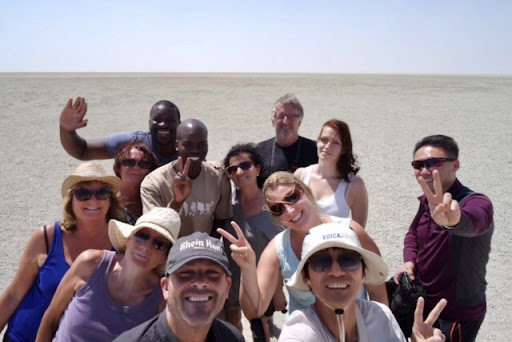



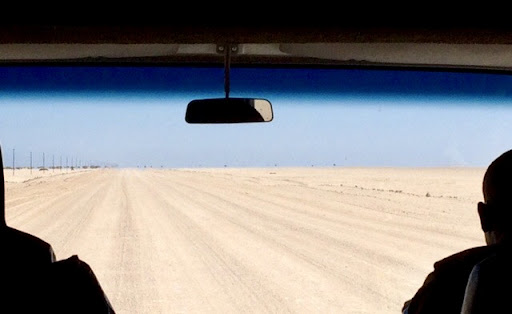





















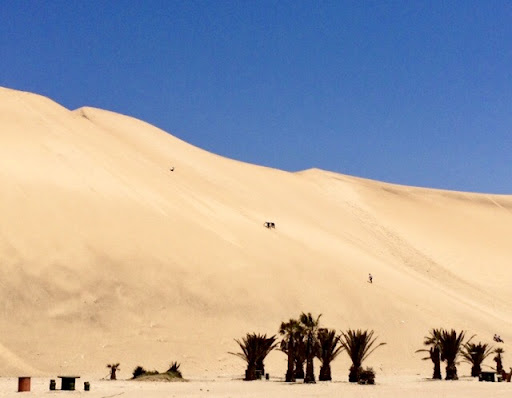





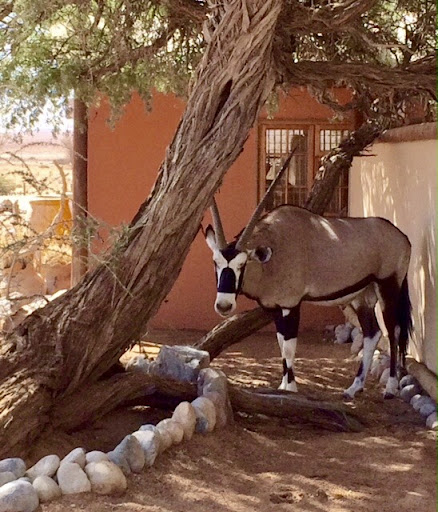

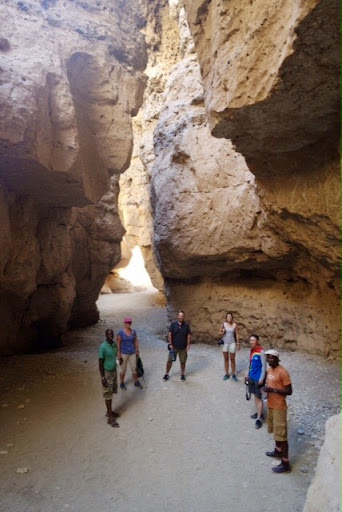

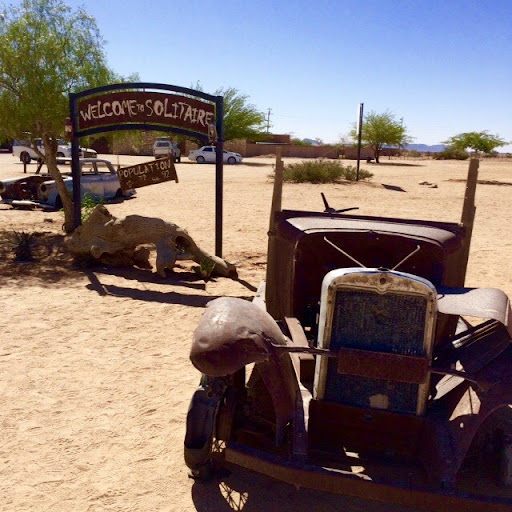




Comments